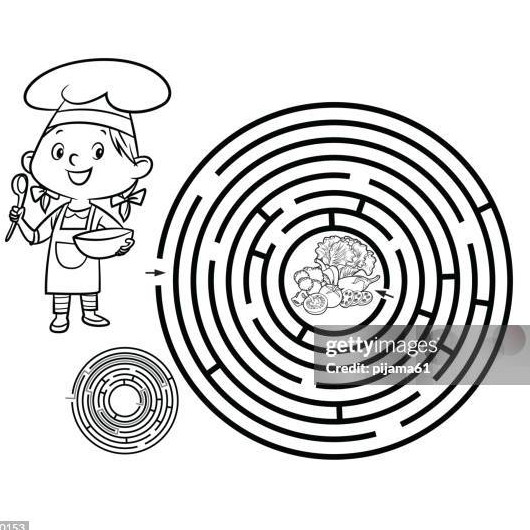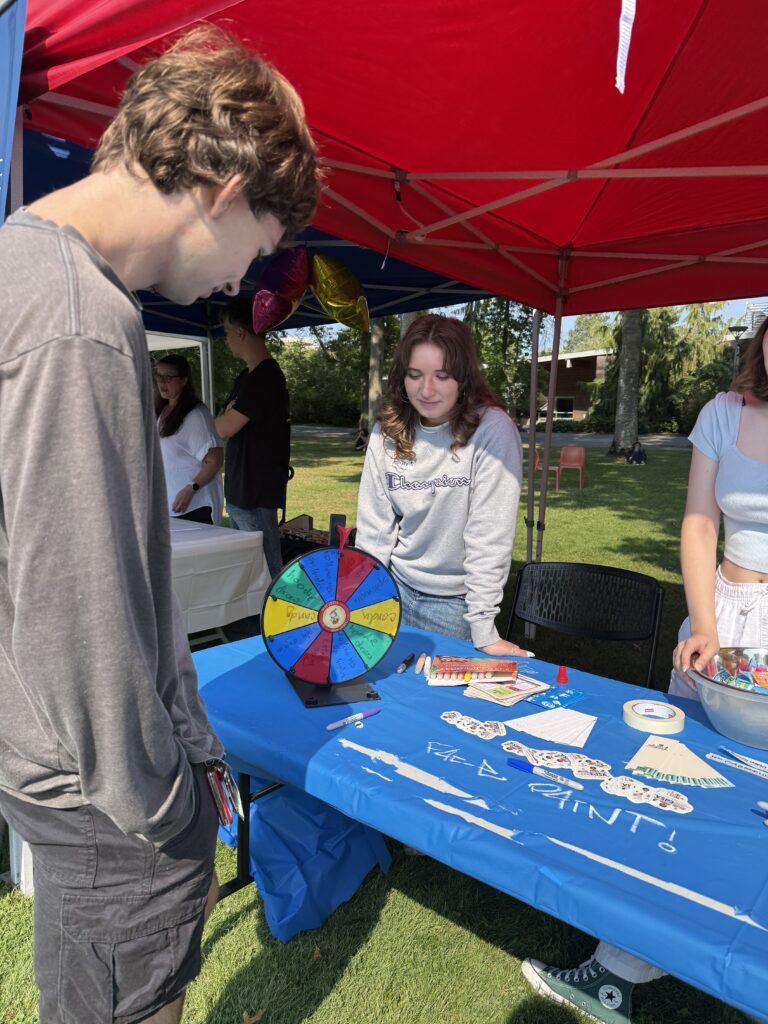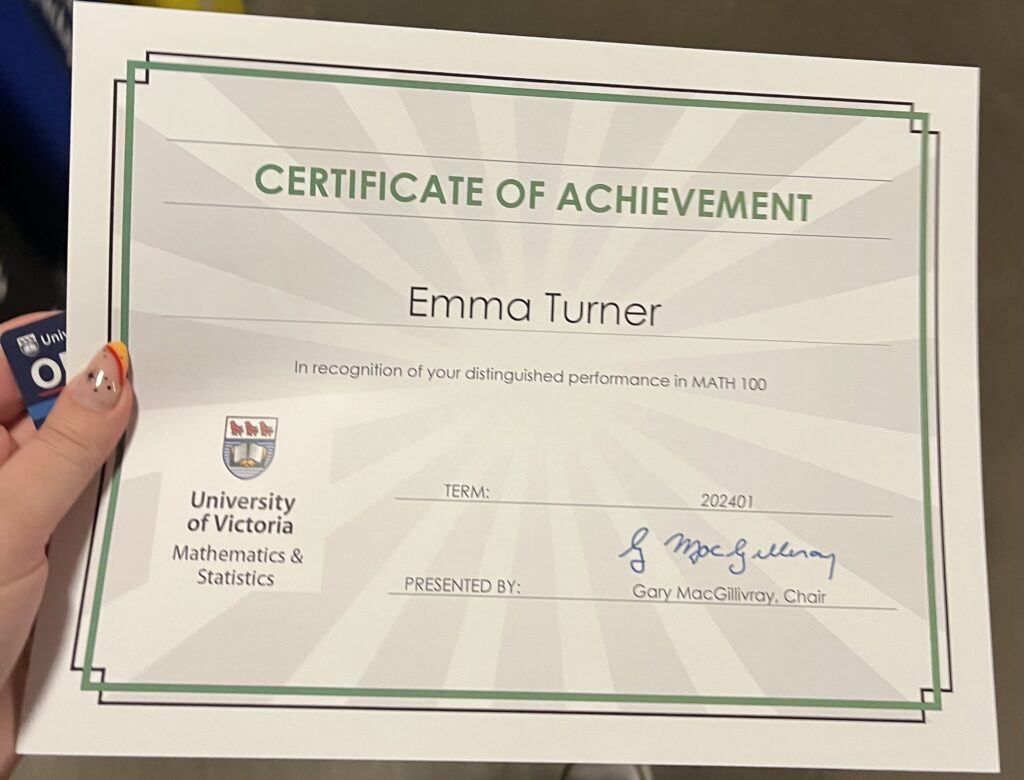For my EDCI 335 Interactive Learning Resource, I created a Social Studies 8 unit that delves into life in the Late Middle Ages of Europe, hosted on Google Classroom!
https://classroom.google.com/c/ODI4NDUzMDAzODcx?cjc=atmpcfns
For my EDCI 335 Interactive Learning Resource, I created a Social Studies 8 unit that delves into life in the Late Middle Ages of Europe, hosted on Google Classroom!
https://classroom.google.com/c/ODI4NDUzMDAzODcx?cjc=atmpcfns
As hit alt-rock band, Twenty One Pilots, says, “Intentions are everything.”
This line has its place in the classroom, as effective learning design stems from intentionality. The best learning spaces are built with diverse learners in mind from the start, instead of continuously retrofitting design with each student. This idea of intentionality sits at the forefront of inclusive, engaging, and effective design in educational practice.

Universal Design for Learning is a concept that has come up in every single education class I have taken at UVic. UDL is the idea that learner diversity is the norm, rather than the exception. Every student comes into the classroom with a unique set of skills, needs, experiences, and worldview, so designing with this in mind from the very beginning ensures that no one is left behind.
UDL has three principles:

One way I’ve used UDL is in my Link2Practice. I was in a Grade 4/5 class and we had two students who struggled with writing. When planning for English Language Arts assignments, I used UDL principles to value their diverse ways of showcasing their understanding. For one student, he struggled with the actual printing part of writing, so I had him type up assignments for ELA. The second student struggled with the connection between her thoughts and forming sentences, so I had her say her ideas orally while I scribed for her. By allowing learners to feel seen in how they can demonstrate their learning, they are far more likely to feel motivated and succeed.
Inclusive Learning Design builds off of the concepts of UDL by recognizing that inclusion is not just about accessibility, but also representation. The importance of representation is something I heard about a lot while I was growing up, but what that actually means didn’t click until I was much older. When I was younger, I remember watching TV shows and movies because they had a singular, non-main character who was queer. I would watch this media for that background character, for that semblance of queerness. When I reflected on this as a teenager, the importance of representation clicked for me. I was a queer person looking for other queer people in the media I was watching, craving that relatability that every other white girl had.
The idea of representation in the classroom is so important, and can be integrated to allow students to feel valid in their identities and like they belong, by:
Both synchronous (real-time) and asynchronous (not-real-time) learning have their own benefits. Synchronous classes build opportunity for connection and a chance to correct misconceptions immediately, while asynchronous classes offer a more accessible learning space and time for reflection. To reap the benefits, educators can combine these, enhancing inclusion for students with busy schedules and differing learning speeds by offering multiple ways to participate.
My experience with asynchronous learning began alongside many others, during the Covid-19 Pandemic. My classes went fully online when I was in Grade 10, and I found that I procrastinated all of my work until the very last two days, when I spent 48 hours doing a semester worth of assignments. In High School, I figured asynchronous learning worked better for me because it had hard deadlines.

In University, I began commuting to school, 1.5h each way. With set 8:30am classes each morning and no flexibility, I found that synchronous classes were my downfall. I work every night, so at most I get about 6 hours of sleep, because all my time goes into commuting rather that learning. Asynchronous classes work so much better for me, because I can put time into learning, doing the work, and being engaged (rather than overtired, but in class) over just commuting back and forth.
So we get this interesting sort of juxtaposition between my experiences with asynchronous classes. When looking back, what I think it really boils down to is design. My Covid classes were designed to be synchronous, so they felt unengaging and unmotivating when taken asynchronously, while my University classes were asynchronous by design, and thus feel educating and significant
In order for online learning to be meaningful and effective, it must be clear, consistent, and connective. Well-designed online environments should be just as structured as they are flexible, by aligning assignments and assessments clearly with learning outcomes. By having criteria and goals accessible, students can focus on learning rather than unveiling expectations.
Including accessible features like captioned videos and multimodal instructions makes learning more accessible for everyone. One of my biggest grievances with assigned videos in classes is when they lack captions. I find that I remember topics much better when I’m reading captions rather than just listening to a video, because I have to more actively participate in my own learning. As well, in asynchronous courses, it’s much easier to screenshot captions for later than rewriting everything currently being said.
Benefits of captions:
This goes to show the impact of inclusive education, and the reason that there is no “average student,” because accessibility benefits everyone.

When educating online, presence is everything and interaction is priceless. This can be seen as having instructors who are actively engaged in the learning experience, whether it’s responding to discussions, returning work with feedback in a timely manner, or sharing lived experiences. This presence isn’t about availability, but rather being intentional with connection.
Even when asynchronous, educators can design an engaging learning space by ensuring it includes all three modes of interaction:
Most important when learning asynchronously (and often shoved on the backburner) is the collaborative practices of learning. By having students peer review, discuss together, and work in group projects, learning becomes a community experience.
Meaningful presence and interaction foster trust in the learning process. Trust invites risk-taking, pushing past comfort zones, and growing. Through this, we get an authentic and significant learning experience.
Teaching is not about having a perfect plan, but it is about having a responsive one. Learning design is a circular process which must be continuously revisited and refined. Through processes like UDL and Inclusive Learning Design, we can make intentional and meaningful educational spaces, whether that means coming together in the classroom or working independently in an online space.
The difference between classes that you do and forget about, and classes that stick with you and shape how you think, is almost entirely based on instructional design. Concepts like backward design, understanding by design, design thinking, learning outcomes, and project-based learning are more than just buzzwords, but tools that explain why some learning experiences felt meaningful, while others felt like busy work.
The idea of Understanding by Design is a educational framework which operates in three stages:
Basically, start at the end and end at the start, or, more eloquently, design backwards.

The idea of starting with the end in mind sounds obvious once you hear it. I used to be obsessed with those mazes you’d find on diner kids menus, and I always solved them end to beginning, because it was the most efficient strategy. I see the appeal of backward design, and it blows my mind that this is barely mentioned in the Bachelor of Education programme. Backward design would be fantastic, except we don’t even get our assessment class until the second semester of year 3. If I was exposed to this theory earlier, I would’ve implemented it into my practicum.
My high school Calculus teacher was one of my favourite teachers ever. She had a doctorate in math and, looking back on her class, I think she infused the idea of backward design into her lessons. She had clear exams, even practice test so we could familiarize ourselves with what kind of material would be on the exam. She never used scantron because she understood that, although math is either right or wrong, it’s easy to make mistakes, and one mistake shouldn’t cost you your grade. Finally, she only assigned homework to students who needed extra practice, understanding that for students who understood the material, it was just busy work. Her class, and her teaching style, will always stand out to me because of her clear instruction, assessment, and lack of busy work. Her class felt meaningful and learning felt fun.
Backward design ensures that the lessons are rooted in learning goals, rather than busy work or random activities. Educators must ask themselves, “What is it that I want my students to be able to do by the end?” which creates a better planned, laid out, and more holistic learning experience.
Design thinking is an educational concept which is stretched over five phases:
What stood out to me about design thinking is the emphasis on empathy. Problem-solving requires looking at the problem from an outside perspective, or even by stepping into someone else’s shoes. The moment I learned about this, it reminded me of an old quote:

To be loved to the point of invention, that is the goal. This story, of the creation of rubber gloves, is a romantic view of design thinking. The surgeon had to step into his wife’s shoes, see how her hands were being irritated at work, and create something to solve this problem. This process mirrors design thinking perfectly.
In my future teaching practice, I plan to invoke this framework into lessons on Indigenous land, climate change, invasive species, and more. By allowing learners to see these problems from an alternate perspective, they themself are suddenly aware of challenges presented, which makes the process of problem-solving much more meaningful.
I am more than familiar with Bloom’s Taxonomy, but I have never heard of the SOLO (Structure of Observed Learning Outcomes) Taxonomy until now. Bloom’s goes into what students should be able to do at the end, using clear, measurable terms, while SOLO’s measures the depth of student learning.
| Vague Verbiage | Specific Learning Outcomes |
| Students will know hip hop culture | Students will be able to describe the cultural significance of hip hop dance |
| Students will do a hip hop combo | Students will be able to demonstrate basic hop hop moves in sequence |
| Students will perform a dance | Students will be able to create and perform a 16-count hip hop dance |

To me, I think Bloom’s is more helpful in learning design, while SOLO is more helpful in learning assessment. While I’m more familiar with Boom’s and thus partial to it, I am sure I will be getting good use out of both of these in my future career.
Surface vs Deep Learning
| Surface-Level Learning | Deep Learning |
| Minimal effort, memorization, low-level skills | Applying, analyzing, evaluating, critiquing |
Reflecting on my experiences in school, I definitely fell into surface-level learning quite a bit. I would memorize formulae and facts to pass an exam, and the moment I would see that “A,” I would completely forget everything that I learned. I was not learning the material because I was engaged, but simply because I needed to pass that test and move onto the next thing.

This contrasts completely with how I am in dance classes. I’ve been an avid dancer for six years, trained in every style you can name except ballet. In dance class, my learning is deep. I went above and beyond memorizing moves, I would practice and apply concepts of rhythm and style that still stick with me now. Between these two experiences, the design is what sets them apart. School felt objective, disconnected, and focused more on grades, while dance was hands-on, iterative, and engaging.
As an education student, inquiry and project-based learning is something I’m all-too familiar with. When students get to explore something they’re interested in, using authentic questions, they feel a sense of ownership over their learning. My work in the Bachelor of Education programme has shown me this first-hand, as a large portion of our assignments are inquiry-based. These kinds of projects allow students to guide their own research, which can feel a lot more meaningful and motivating than traditional assignments.
This approach creates a more holistic learning experience and fosters a deeper connection to content, especially when tied to personal interests. Of course, it comes with many challenges too:
Every good thing comes with a challenge, and I believe that the benefits of inquiry-directed learning outweigh the challenges. Project-based learning prepares students for the world outside of school, where learning comes from exploration and collaboration.
Module 2 helped me connect the dots between theory and practice. Backward design ensures clarity, design thinking centers empathy, Bloom’s taxonomy strengthens outcomes, and project-based learning gives students real-world ownership. Together, these ideas push learning beyond surface-level memorization into something that really sticks.
As I continue in education, I want to keep asking myself: Am I designing for deep, lasting learning?
Hello and welcome to my first (of many) EDCI 335 blog posts. I am Emma, and I am currently in year 3, working on my Bachelor of Education alongside an Information Technology Certificate. The biggest experience I have had that has shaped my journey as an educator is definitely the three-week practicum I completed in May. I taught Math and Social Studies in a Grade 8 class at Rockheights Middle School and it was such an eye-opening experience. Taking EDCI classes is one thing, but to actually be in the classroom, interacting with and teaching students, taught me more than a textbook ever could.

To me, learning is more than just the acquisition of knowledge. I would argue that is is also the ability to identify, interpret, and organize information, connecting it to prior knowledge. I am a dancer at heart, and I think that dance can be one of the best examples of learning in action. When I learn a dance, I observe and analyze my dance teacher, try it myself, refine and practice this until it becomes muscle memory. Learning dance dips into all three non-digital learning theories: behaviourism, cognitivism, and constructivism, but I think (for me) it connects best with constructivism, as it ties new learning with my own experiences.
As for motivation in regards to the ARCS model, the biggest factor that motivates me is the A: Attention. Although Relevance, Confidence, and Satisfaction definitely play parts too, I think I am most motivated when something challenges me. Rising to a challenge excites me much more than doing something easy. This is why I’m taking seven courses this semester, and why I’ve been taking extra math courses as I’ve been at UVic: I crave a challenge. Of course, a challenge is nothing without the achievement of success. My motivation is Attention, but Satisfaction too: the satisfying outcome of completing a challenge.

As an adult learner, I bring a lot of past experience into new learning. Dance has taught me persistence through challenges, how to pick up new ideas quickly, and how important critique and feedback is. Growing up in the age of technology has made me comfortable and confident in using digital tools inside the classroom.
© 2025 Emma's Archive
Theme by Anders Noren — Up ↑